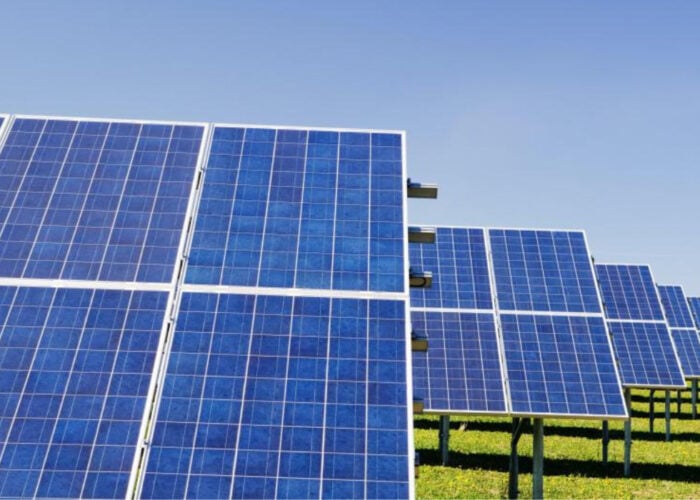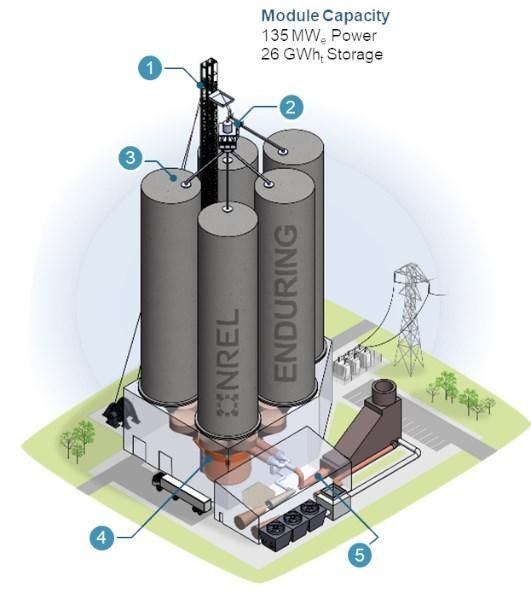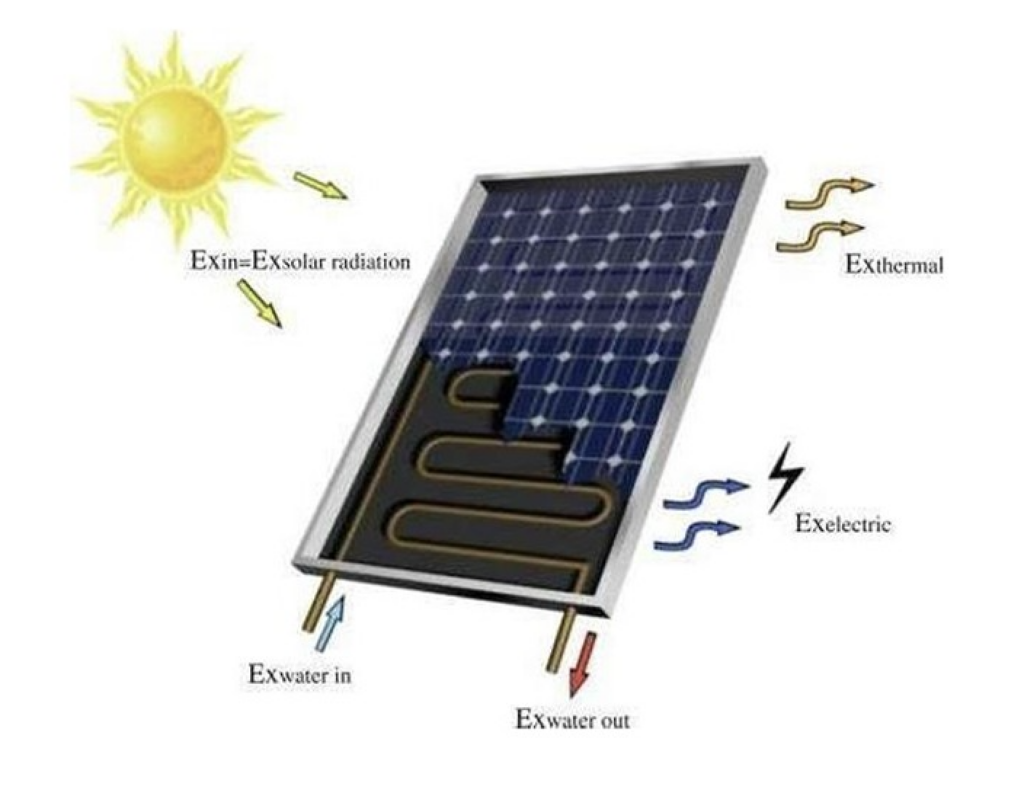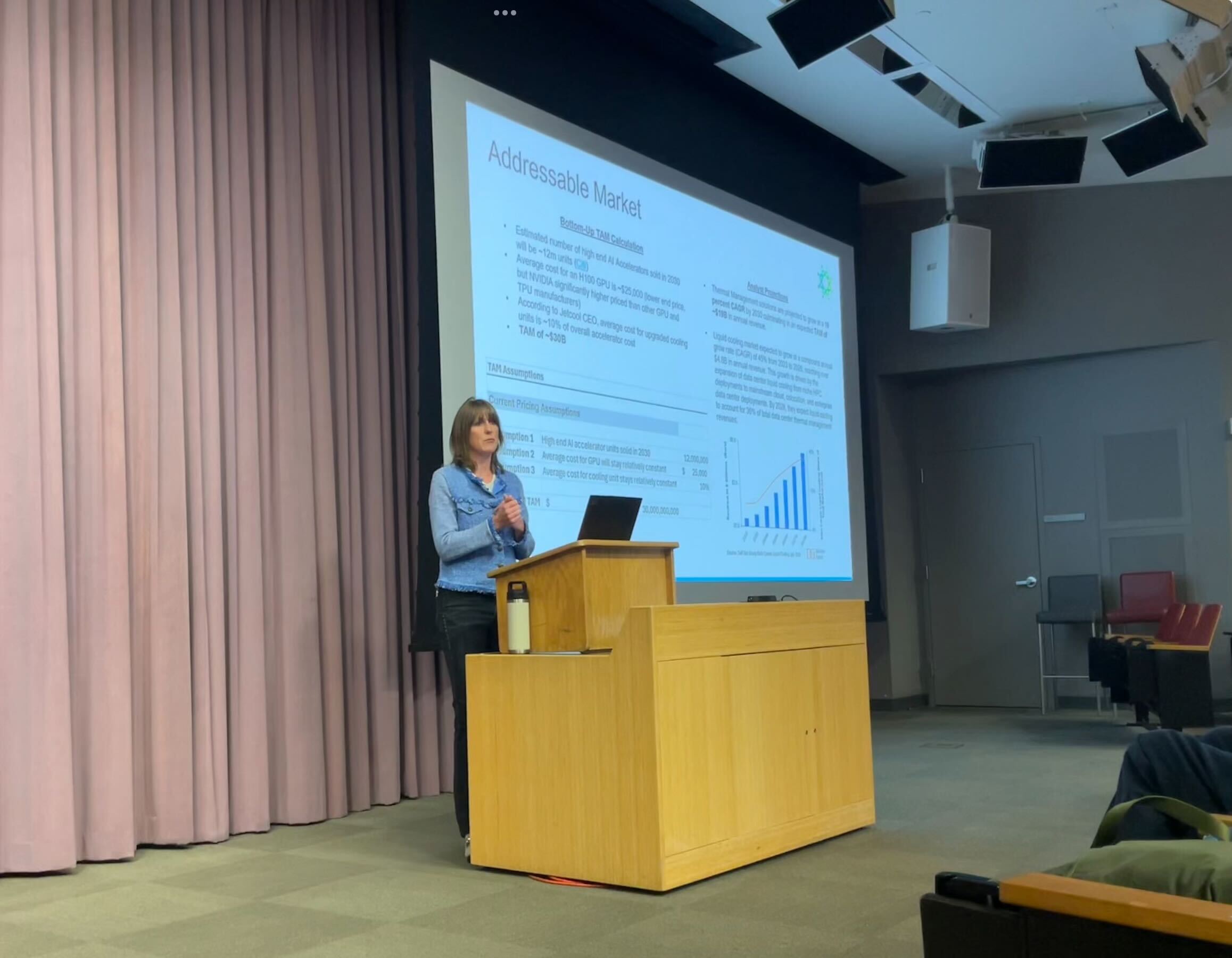Battery Energy Storage System : key to the energy transition – SIA Partners

Report on Europe’s Clean Energy Transition and Alignment with Sustainable Development Goals
This report outlines the state of Europe’s clean energy transition as of Q1 2025, analyzing key sector developments through the lens of the United Nations Sustainable Development Goals (SDGs). The continent is navigating geopolitical and economic challenges while advancing a transformative agenda for clean energy, resilient infrastructure, and climate action.
Advancing SDG 7: Affordable and Clean Energy
Europe’s commitment to SDG 7 is demonstrated by record-breaking expansion in renewable energy generation, supported by ambitious policy frameworks. However, significant challenges in infrastructure and supply chain management must be addressed to meet 2030 targets.
Wind and Solar Energy Expansion
- Record Installations: In 2024, Europe significantly increased its clean energy capacity by adding a record 65.5 GW of solar and 16 GW of wind power, directly contributing to SDG 7.
- Policy Drivers: The REPowerEU plan has elevated the EU’s binding renewable energy target to a minimum of 42.5% by 2030, while Germany aims for 80% renewable power in the same timeframe.
- Deployment Challenges: Despite growth, bottlenecks persist. Germany’s offshore wind target of 30 GW by 2030 is at risk, with only 27 GW expected. Grid congestion and permitting delays for onshore wind remain critical barriers to accelerating progress on SDG 7.
- Corporate Demand: Corporate Power Purchase Agreements (PPAs) surged, with 316 deals signed in 2024, indicating strong private sector commitment to clean energy procurement.
Development of Alternative Fuels
To decarbonize hard-to-abate sectors and enhance energy security, Europe is investing in alternative fuels, aligning with SDG 7 and SDG 13 (Climate Action).
- Green Hydrogen: The EU aims to produce over 10 million tons of renewable hydrogen by 2030. However, progress is hampered by high production costs and the need for extensive infrastructure development, with a full pipeline system not expected before 2032.
- Biomethane and Biofuels: Under REPowerEU, biomethane production is targeted to increase tenfold to 35 bcm by 2030. This provides a viable pathway to reduce natural gas dependency and supports SDG 12 (Responsible Consumption and Production) by utilizing waste-based resources.
Fostering SDG 9: Industry, Innovation, and Resilient Infrastructure
The energy transition necessitates a profound transformation of Europe’s infrastructure, driven by innovation in grid management, energy storage, and transportation. This modernization is central to achieving SDG 9.
Grid Modernization and Energy Storage
- Infrastructure Resilience: The April 2025 blackout affecting Spain and Portugal underscored the urgent need for robust grid infrastructure and enhanced interconnection capacity to support a renewable-heavy energy system.
- Battery Storage Systems (BESS): As a critical enabler of grid stability, European battery storage capacity reached 67 GW in Q1 2025. BESS is essential for managing the intermittency of wind and solar power, thereby supporting the integration of clean energy.
- Digitalization and Smart Grids: The adoption of smart meters, AI-driven demand forecasting, and vehicle-to-grid (V2G) integration are key innovations. These technologies enhance efficiency and flexibility, turning the energy grid into a smart, resilient infrastructure compliant with SDG 9 principles.
Transformation of Mobility Infrastructure
The shift towards electric mobility is reshaping transportation networks and related industries, contributing to SDG 11 (Sustainable Cities and Communities).
- EV Charging Network: Ultra-fast chargers (≥150 kW) are now available every 60 km along major EU highways, building the necessary infrastructure for widespread EV adoption.
- From Petrol Stations to Energy Hubs: With a projected 45% decline in petrol stations by 2050, operators are transforming forecourts into multi-energy hubs offering EV charging, hydrogen, and biofuels. This industrial adaptation exemplifies the innovative spirit of SDG 9.
Market Dynamics and Investment in Sustainable Development
Financial markets are increasingly aligning with sustainability objectives, with significant capital flowing into the energy transition. This investment is crucial for achieving the SDGs.
The Rise of AI in Power Trading
- Innovation in Markets: AI-powered trading is optimizing energy markets by responding to weather-driven price volatility. Danish traders have achieved returns on equity up to 260.8% by capitalizing on these fluctuations.
- Systemic and Regulatory Risks: The high volume of automated trades (4.4 billion monitored in 2022) introduces systemic risks and highlights the need for updated regulatory oversight to ensure market stability and integrity.
Mergers, Acquisitions, and Investment Outlook
- Capital Mobilization: Global investment in the energy transition surpassed $2 trillion in 2024, with renewable energy M&A deals reaching a record $117 billion. This demonstrates strong investor confidence in assets that support the SDGs.
- Key Investment Areas: M&A activity is concentrated in offshore wind, battery storage, and integrated grid infrastructure, with private equity and infrastructure funds playing a dominant role.
- Consolidation Trends: The market is seeing consolidation among renewable developers and EV charging networks, as legacy energy companies acquire clean-tech assets to reposition their portfolios in line with global climate goals.
Conclusion: A Pivotal Moment for Europe’s SDG Commitments
Europe’s energy transition has strong momentum, driven by policy ambition and robust investment. The rapid expansion of renewables, the build-out of smart and resilient infrastructure, and the decarbonization of transport are direct contributions to SDGs 7, 9, 11, and 13. While geopolitical tensions, supply chain vulnerabilities, and policy execution risks present challenges, the strategic alignment of capital and innovation continues to drive progress. The successful navigation of these complexities will determine Europe’s ability to lead the global transition to a sustainable, clean energy future.
Analysis of Sustainable Development Goals in the Article
1. Which SDGs are addressed or connected to the issues highlighted in the article?
-
SDG 7: Affordable and Clean Energy
- The article’s core theme is Europe’s transition to clean energy. It extensively discusses the expansion of renewable energy sources such as wind and solar, mentioning that Europe added a “record 65.5 GW solar and 16 GW wind in 2024.” It also covers the development of alternative fuels like hydrogen and biofuels, and the necessary infrastructure like energy storage and EV charging networks.
-
SDG 9: Industry, Innovation, and Infrastructure
- The article highlights the need for resilient and upgraded infrastructure to support the energy transition. This includes modernizing power grids to handle intermittent renewables, building a robust EV charging network with “ultra-fast chargers (≥150 kW) now every 60 km on major EU highways,” and developing hydrogen pipeline systems. Innovation is a key focus, particularly the use of “AI-powered trading” to manage energy market volatility and the development of smart grid solutions.
-
SDG 11: Sustainable Cities and Communities
- The article addresses the shift towards sustainable transport systems within communities. It discusses the rapid expansion of EV charging infrastructure and the transformation of urban petrol stations into “multi-energy service hubs” that offer EV charging, hydrogen, and biofuels. This reflects the changing infrastructure required for sustainable urban mobility.
-
SDG 13: Climate Action
- The entire energy transition described in the article is a fundamental strategy for climate action. The article mentions specific policies aimed at decarbonization, such as the EU’s Green Deal, the REPowerEU plan, and Germany’s goal to achieve “80% renewable power by 2030” and a “net-zero target” by 2045. These policies and actions are direct responses to the need to combat climate change.
-
SDG 8: Decent Work and Economic Growth
- The article frames the clean energy transition as a major economic opportunity, noting that “global energy transition investments exceeded $2 trillion” and that clean energy is becoming a “mainstream asset class.” It discusses significant M&A activity, high-value sectors like AI power trading where firms saw “ROEs up to 260.8%,” and the creation of new business models, all of which contribute to economic growth and productivity.
-
SDG 12: Responsible Consumption and Production
- The shift away from fossil fuels towards renewables and alternative fuels like “biomethane” and “waste-based biofuels” aligns with sustainable consumption and production patterns. The article notes the EU’s goal to increase biomethane production tenfold by 2030, which supports a circular economy by upgrading biogas for grid injection.
2. What specific targets under those SDGs can be identified based on the article’s content?
-
SDG 7: Affordable and Clean Energy
- Target 7.2: By 2030, increase substantially the share of renewable energy in the global energy mix. This is directly addressed by the EU’s binding target to raise its renewable energy share to “at least 42.5% of final energy” by 2030 and Germany’s goal of “80% renewable power by 2030.”
- Target 7.b: By 2030, expand infrastructure and upgrade technology for supplying modern and sustainable energy services for all. The article details massive investments in infrastructure, including the expansion of offshore wind farms, the deployment of “67 GW” of battery storage capacity in Europe, and the buildout of a comprehensive EV charging network.
-
SDG 9: Industry, Innovation, and Infrastructure
- Target 9.4: By 2030, upgrade infrastructure and retrofit industries to make them sustainable, with increased resource-use efficiency and greater adoption of clean and environmentally sound technologies and industrial processes. This is reflected in the discussion of transforming petrol stations into “multi-energy centers,” upgrading power grids with “smart grid solutions,” and the industrial shift towards green hydrogen and biofuels.
- Target 9.5: Enhance scientific research, upgrade the technological capabilities of industrial sectors in all countries. The article emphasizes technological innovation, such as Danish power traders “using AI” for intraday decisions, the development of “vehicle-to-grid (V2G) technologies,” and advancements in “megawatt charging for trucks and buses.”
-
SDG 11: Sustainable Cities and Communities
- Target 11.2: By 2030, provide access to safe, affordable, accessible and sustainable transport systems for all. The article’s focus on building a dense network of “ultra-fast chargers… every 60 km on major EU highways” directly supports the viability and accessibility of electric vehicles as a sustainable transport option.
-
SDG 13: Climate Action
- Target 13.2: Integrate climate change measures into national policies, strategies and planning. The article explicitly mentions high-level policy frameworks like the “EU’s Green Deal initiatives and REPowerEU plan” and national legislation like “Germany’s Hydrogen Network Act” as drivers of the energy transition.
3. Are there any indicators mentioned or implied in the article that can be used to measure progress towards the identified targets?
-
For SDG 7 (Affordable and Clean Energy)
- Indicator for Target 7.2: Renewable energy share in total final energy consumption. The article provides specific targets that act as indicators: the EU’s goal of “at least 42.5% of final energy” from renewables by 2030 and Germany’s target of “80% renewable power by 2030.”
- Indicator for Target 7.2: Installed renewable energy-generating capacity. The article provides concrete figures: “Europe added a record 65.5 GW solar and 16 GW wind in 2024,” and Germany is targeting “30 GW” of offshore wind by 2030.
- Indicator for Target 7.b: Investment in energy infrastructure. The article mentions “global energy transition investments exceeded $2 trillion” and that investments in energy storage “climbed to an all-time high of $54 billion globally.”
-
For SDG 9 (Industry, Innovation, and Infrastructure)
- Indicator for Target 9.4: CO2 emission per unit of value added. While not explicitly stated as a ratio, the entire article’s premise of shifting to renewables, hydrogen, and biofuels implies a reduction in industrial CO2 emissions.
- Indicator for Target 9.5: Research and development expenditure. The article implies significant R&D through discussions of AI in power trading, V2G technology pilots, and innovations in hydrogen internal combustion engines and E-fuels.
-
For SDG 11 (Sustainable Cities and Communities)
- Indicator for Target 11.2: Proportion of population that has convenient access to public transport. The article provides a proxy indicator for sustainable private transport: the density of the EV charging network, specified as having “fast chargers (≥150 kW) every 60 km” on major highways.
-
For SDG 13 (Climate Action)
- Indicator for Target 13.2: Number of countries that have communicated the establishment or operationalization of an integrated policy/strategy/plan which increases their ability to adapt to the adverse impacts of climate change. The article names specific policies like the “REPowerEU plan” and Germany’s “Renewable Energy Sources Act (EEG 2023)” as evidence of such integrated strategies.
4. SDGs, Targets, and Indicators Summary Table
| SDGs | Targets | Indicators |
|---|---|---|
| SDG 7: Affordable and Clean Energy | 7.2: Increase substantially the share of renewable energy in the global energy mix. |
|
| 7.b: Expand infrastructure and upgrade technology for supplying modern and sustainable energy services. |
|
|
| SDG 9: Industry, Innovation, and Infrastructure | 9.4: Upgrade infrastructure and retrofit industries to make them sustainable. |
|
| 9.5: Enhance scientific research and upgrade technological capabilities. |
|
|
| SDG 11: Sustainable Cities and Communities | 11.2: Provide access to safe, affordable, accessible and sustainable transport systems for all. |
|
| SDG 13: Climate Action | 13.2: Integrate climate change measures into national policies, strategies and planning. |
|
Source: carlsquare.com

What is Your Reaction?
 Like
0
Like
0
 Dislike
0
Dislike
0
 Love
0
Love
0
 Funny
0
Funny
0
 Angry
0
Angry
0
 Sad
0
Sad
0
 Wow
0
Wow
0














































.jpg.webp?itok=0ZsAnae9#)







:focal(1500,1000)/https://media.globalcitizen.org/a6/9a/a69a4720-d8a1-4715-b596-18738d03c05c/rotary_polio_hero_image.jpg?#)

/countries/sri-lanka/photo-credit---dmc-sri-lanka.tmb-1200v.jpg?sfvrsn=dc298bcc_1#)



















